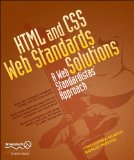Since I don’t normally buy a lot of books, I never saw much personal reason to buy a Kindle.
That may change. More . . .
I read a lot, but I don’t buy a lot of books. I get books at the library. I buy magazines and newspapers, but only the occasional book. The other day I grabbed a book at the library called Grown Up Digital by Don Tapscott because of this sentence on the inside flap of the cover: “The bottom line is this: if you understand the Net Generation, you will understand the future.”
I haven’t read it yet, so I’m not ready to say I understand the future. As soon as I read it, I’ll be ready to give you any hints about the future that you might want. Right now, pre-reading, I’m thinking that the future involves e-book readers, the hottest of which is the Kindle.
Since I don’t normally buy a lot of books, I never saw much personal reason to buy a Kindle.
That may change.
For one thing, I own an iPhone, and read my first ebook using the Kindle iPhone app recently. I found I loved reading that way. Denise does, too.
And then the Kindle 2 came out. This device is bigger in phyiscal size and is meant to handily display larger format information such as newspapers and textbooks. It will also publish blogs and download your magazine subscriptions instantly.
Yes, you can now publish your blog to the Kindle. You can even self-publish a book to the Kindle, like Burningbird.
As I mentioned, I subscribe to newspapers and magazines. A steady flow of paper comes into the house, passes before my eyes, and exits via my recycling bin. Knowing that I could get all the same material without all the paper is important information based on my world view. Miraz at KnowIT said in Books of the future: chunky bits of digital linkbait?
A while back I published a post called I hate books, in which I wrote about how fed up I am with books being published on dead trees. My pal Maria wrote a rebuttal, I love books where she wrote about the appeal of words printed on paper.
What about those dead trees? What is the environmental impact of e-readers?
An extensive analysis of this issue at Fat Knowlege called E-Books Vs. Newspapers looks at every aspect of this question—from cutting trees, running printing presses, delivering paper reading material on the paper side of the equation to manufacturing and disposal of electronic readers and even the electricity consumed by the servers delivering material to devices on the e-book side of the equation. One of the conclusions was
Reading the physical version of the NY Times for a year uses 7,300 MJ of energy and emits 700 kg of co2. Reading it on a Kindle uses 100 MJ of energy and emits 10 kg of co2.
Newspapers desperately need to keep subscribers right now. The New York Times has released its own Reader application which is used on computers. Other newspapers have gone completly online, even without special reader apps. Funny Business asked, Can the Kindle DX Save Newspapers? At the Business Insider, we learn that Printing the NYT Costs Twice as Much as Sending Every Reader a Free Kindle.
We all seem to grasp the idea that traditional publishing on paper has reached a crisis point. What we resist is concluding that devices like the Kindle may the solution.
People are slow to change, and cite reasons like “loving the feel of a book” as a reason to resist e-book readers. Even people who make the switch, like One Plus Two in I love me some Kindle seem ambivalent about the change.
Then there are unresolved issues around DRM and Author rights vs. disability rights. See Publishers hit Kindle Text to Speech Kill Switch for an update on that the rights story.
BlogHer Contributing Editor Sassymonkey talked about DRM to me in an email.
I love the *idea* of the e-book readers so, so much but I hate DRM with a passion. When I buy an actual book I can move it around from a bookshelf to the car to whatever. I can even loan it to friends. So why the heck can’t I move an ebook from my Mac to my ebook reader to my iphone to our PC without doing something illegal and causing publisher/some author’s heads from exploding? I mean, I’ve paid for the book. Sigh.
Even as all these issues are debated, legislated, and pondered, the e-book market races ahead with gusto. Develop the technology, sell the devices, and resolve the details later. That’s the current system. World Public Library has over half a million e-books listed. When Jeff Bezos introduced the Kindle 2, he said,
Today there are 275,000 books available for the device. On Amazon.com, 35 percent of sales of books that have a Kindle edition are sold in that format.
That’s huge: 35%. As more people get Kindle devices, I think that percentage will rise. The plus factors are compelling. It’s better for the environment and it’s cheaper. Most books are only $9.99, there’s no shipping cost, and you have the book or newspaper in your hand seconds after you buy it. That seems like a “duh” factor to me. What person who owned a Kindle wouldn’t opt for e-book over print?
Does that mean e-book readers are the solution for publishing, or are they just one aspect of this transition in media that we are embroiled in right now? I wish I had the answer. I can tell you this: the next time I buy a book, if I can get it on the Kindle app on my iPhone, I will. Absolutely.
Cross-posted at BlogHer.





